A big part of the Hinterland Trust’s work is our Green Burial Ground in Wilkies Wood, right next to the Park, and Laura is a key person in the Green Burials team. The site was created when a severe storm felled a large area of trees, and now it’s a space for around 120 lairs. There is a plan to make further space available in the next year or so as this becomes necessary. Wilkies Wood also has space where celebrations can take place such as weddings and our traditional annual MayPole dance event. Please meet Laura Shreenan!
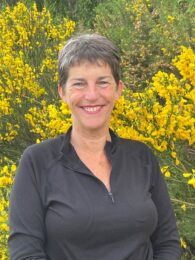 I’m one of the Funeral Coordinators for the Green Burials team, and also the Funeral Assistant, which means I’m usually the first point of contact when someone wishes to discuss a Green Burial, or wants to buy a plot in the burial ground, which is called a lair.
I’m one of the Funeral Coordinators for the Green Burials team, and also the Funeral Assistant, which means I’m usually the first point of contact when someone wishes to discuss a Green Burial, or wants to buy a plot in the burial ground, which is called a lair.
When I’m contacted for a funeral, I coordinate all the logistics with the team, including liaising with my co-coordinator Juanna Ladaga and Kajedo Wanderer and James Bryson who manage the land side and grave digging, as well as funeral directors and the family.
I’m part of a team, which I love, where we all work alongside each other and recognise our different gifts. It is wonderful to work in a team that respects each other for what we all bring.
When I saw the advert for this role with Findhorn Hinterland Trust it was an automatic ‘yes’ from me. I felt a sense of absolute alignment with who I am in this world. It was a beautiful complement, continuation and completion of my primary role at the time, being the Caring Community Coordinator and having some part to play when community folk passed away. It’s precious to be able to walk this journey with folk and to support family and friends of the deceased through a day they will memorialise for the rest of their lives. Being able to help smooth this pathway is a privilege.
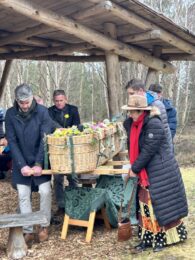 Having a green burial ground as part of our community is an extraordinary gift. Often people approaching the end of their life, or their families, give over all agency to the professionals, who may have a standard way of doing things – this is their business after all. Having our own green burial ground means we don’t have to standardise, we can breathe and dream into creating something that’s deeply personal and important. It allows us to treat death and burial as part of an interdependent process, knowing the land is being nourished, and the person is part of the continuing ecology of the area. Our interconnectedness is not just felt and talked about, it’s actually tangible and manifest.
Having a green burial ground as part of our community is an extraordinary gift. Often people approaching the end of their life, or their families, give over all agency to the professionals, who may have a standard way of doing things – this is their business after all. Having our own green burial ground means we don’t have to standardise, we can breathe and dream into creating something that’s deeply personal and important. It allows us to treat death and burial as part of an interdependent process, knowing the land is being nourished, and the person is part of the continuing ecology of the area. Our interconnectedness is not just felt and talked about, it’s actually tangible and manifest.
I’m originally from Zimbabwe, and moved to the Isle of Man as a single parent of three boys in 2000. I met and married Colin, a Scot and we lived in Central Scotland. In 2008 we started a charity called A2Z World Without Walls and aspired to create supportive bridging between the people of Scotland and Zimbabwe. Our small grassroots funding made a significant positive impact in Zimbabwe. We were subsequently invited to join a ministerial team in Harare in 2009 and moved there permanently in 2010.
In 2016 when my father was diagnosed with a life-limiting untreatable illness we made the decision to relocate to Forres to be close to him and my Mom. They have now both passed away and are buried in Wilkies Wood. When we arrived here I began applying for jobs and was employed by CrossReach in a residential care home in Nairn. I was struck by how few people, whether relatives or indeed care workers, had any idea about end-of-life planning but serendipitously my parents lived next door to Jane Duncan Rogers and in connecting with her I was introduced to Cornelia Featherstone – both members of the community – and this is what led to me applying for the the Caring Community Circle Coordinator job that brought me to Findhorn.
 My background is very diverse and wide ranging, in multiple countries. I graduated from Stirling University as a mature student in 2008 with a BSc Midwifery, and worked as a midwife for the NHS for two years post-graduation before moving to Zimbabwe in 2010. I have in my past been ordained as a Pentecostal minister here in Scotland and I have also served as a chaplain’s assistant both on the Isle of Man and in Scottish prisons. My roles seem to have mostly centered on becoming deeply involved in people’s lives, and often this has been as a supportive companion. Being part of people’s life journeys, to listen to them and support when needed, to help people be less afraid, to encourage recovery, enablement and empowerment – that’s been my focus for as long as I can remember.
My background is very diverse and wide ranging, in multiple countries. I graduated from Stirling University as a mature student in 2008 with a BSc Midwifery, and worked as a midwife for the NHS for two years post-graduation before moving to Zimbabwe in 2010. I have in my past been ordained as a Pentecostal minister here in Scotland and I have also served as a chaplain’s assistant both on the Isle of Man and in Scottish prisons. My roles seem to have mostly centered on becoming deeply involved in people’s lives, and often this has been as a supportive companion. Being part of people’s life journeys, to listen to them and support when needed, to help people be less afraid, to encourage recovery, enablement and empowerment – that’s been my focus for as long as I can remember.
My connection with nature, unsurprisingly, comes through humans. I seek treasure in people and help them to see it in themselves. So my part in this orchestra of life is people; for others it’s trees or lichen. But the ethos of the Hinterland Trust is awakening me to the wholeness of the Earth, the land, the bees, and the human. The love and connectedness of humans and nature is part of my evolution.
I’m sometimes asked if anyone can be buried here, and yes of course they can. The Green Burial Ground is not closed and isn’t exclusive to the community. It’s loved and tended by community organisations and people, but it’s open to anyone who feels drawn to a green burial. It draws people who have the same ethos and values, who then come and visit their loved ones and enjoy the Hinterland, and that’s very beautiful.
I’m very excited that together with my colleague Juanna Ladaga we will be creating and presenting two educational workshops this year where we will provide insights and information in regard to dying and death and all it encompasses. We are very pleased that Laura Pasetti of Theatre of the 7 Directions, has agreed to partner with us by presenting a short drama to illustrate the interconnected process of life, death and rebirth.
My high dream for the Hinterland Trust, or more specifically for green burials, is that we can offer more funeral director services within the community itself, so that a body needn’t be moved from the Park to a funeral home before burial if this is not wished for, as it can create a sense of disconnect for some. I wish for a purpose-built beautiful structure that allows people to remain on the land. A place where a body can rest, where people can come and conduct their own washing and dressing of their loved one if they wish, a place for final respects or viewing to be offered, and all in a time frame that works for everyone. The structure would also offer a place where we can hold an indoor ceremony if necessary, and be a venue for gathering afterwards with refreshments and for a celebration-of-life event. I can feel it, I can see it and I can believe it will happen if it is meant to be.


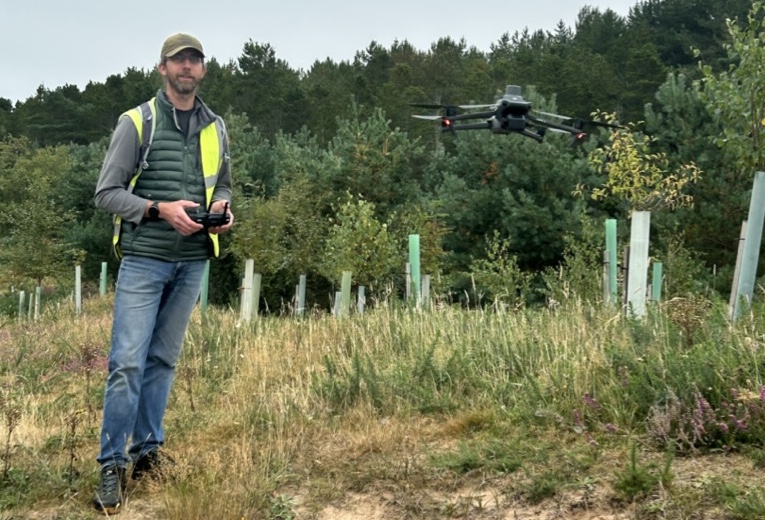
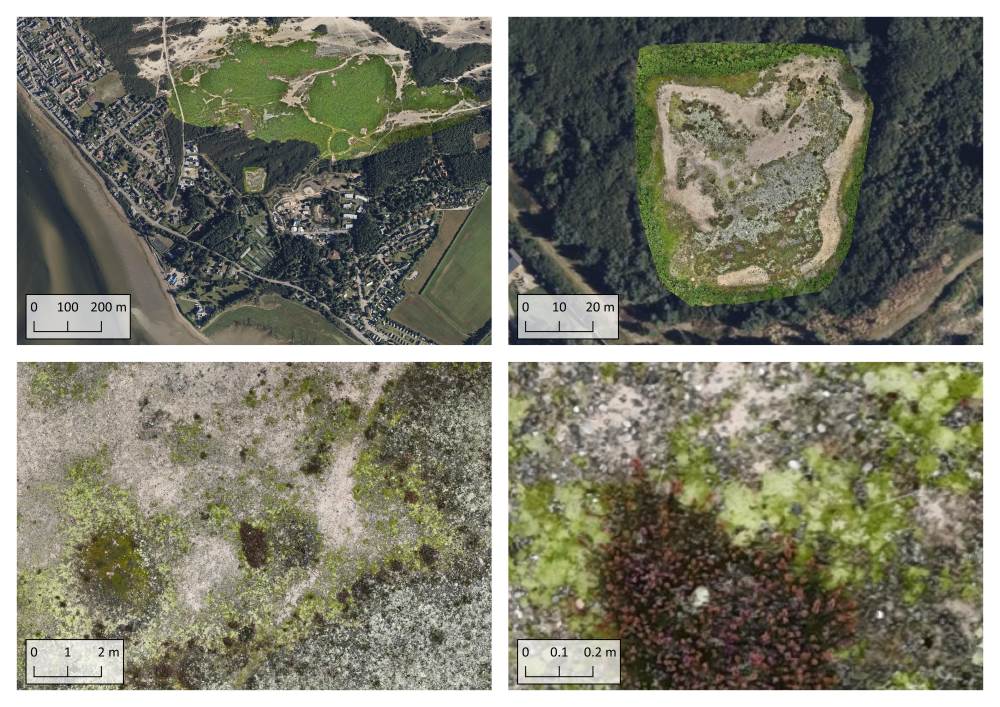
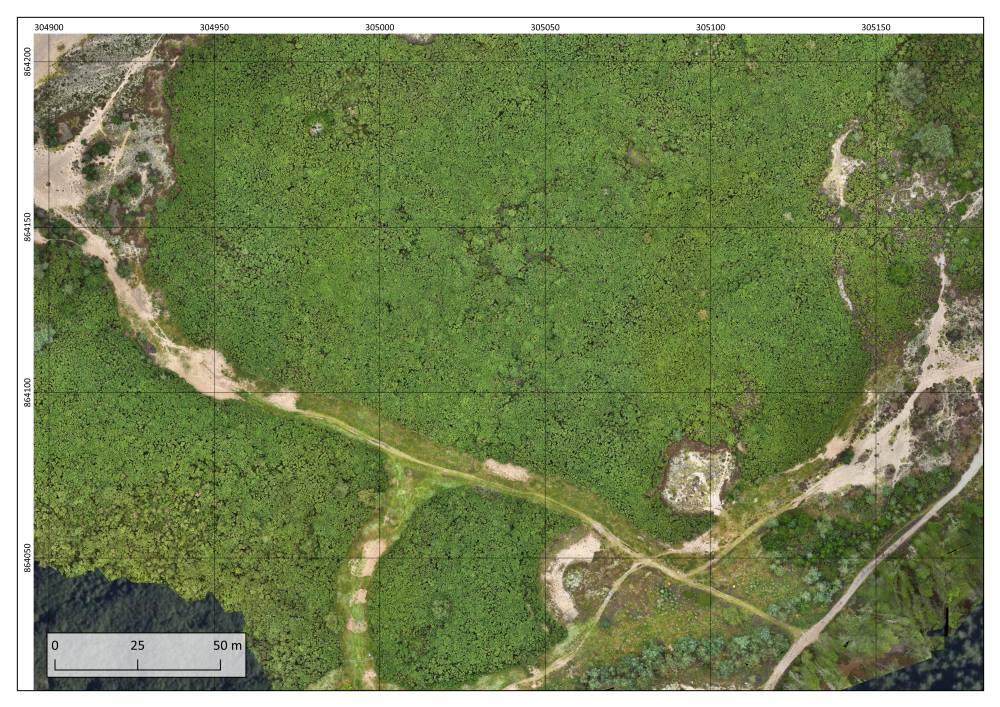
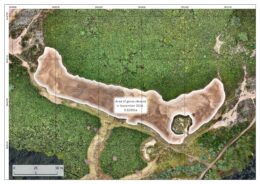
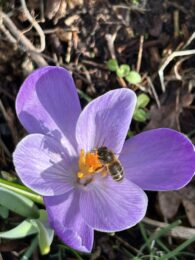
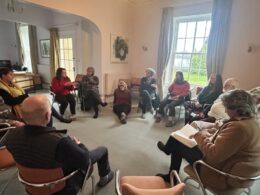
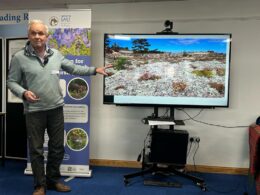
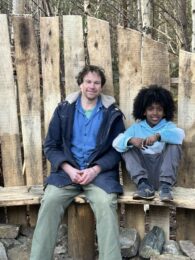
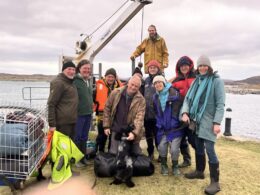
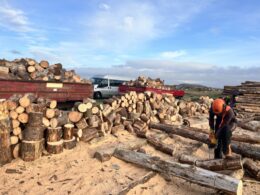
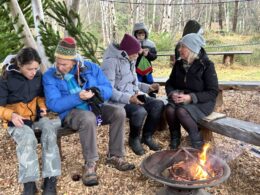
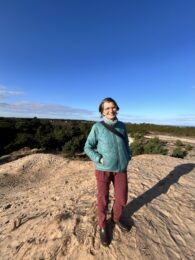

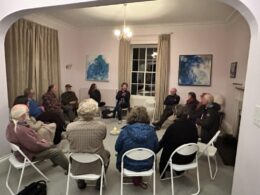
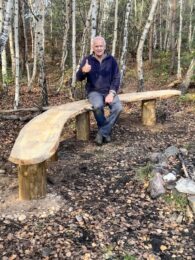
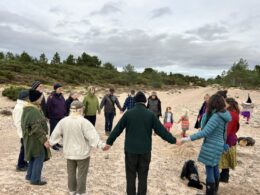
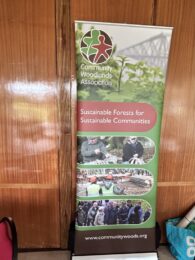
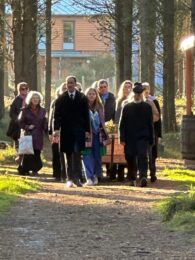
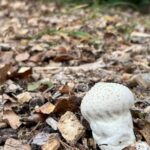

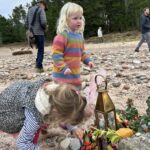

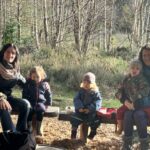
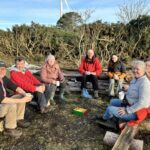
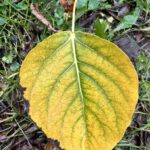

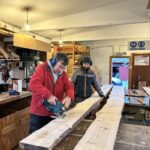
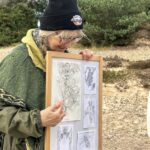
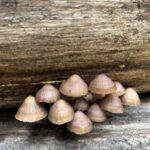
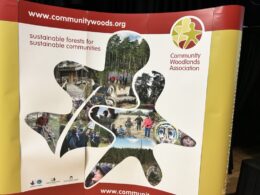
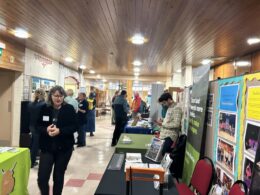
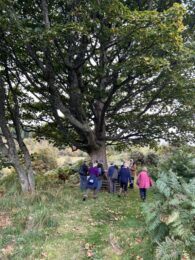
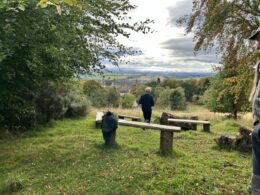
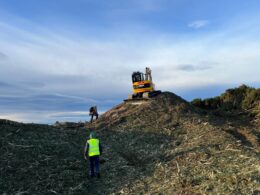
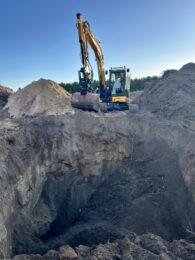
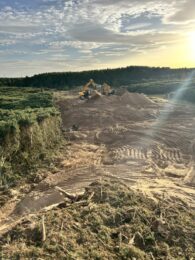
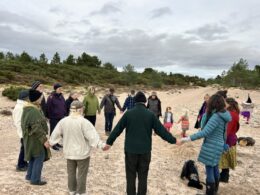
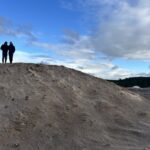
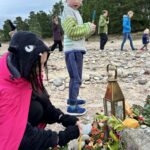

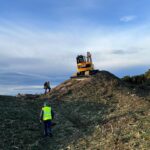
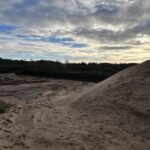
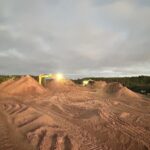
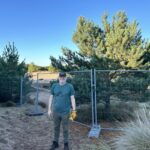
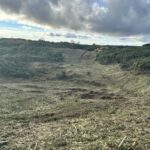
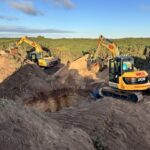
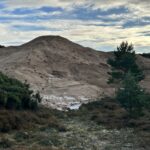
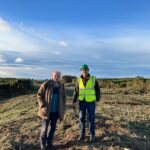
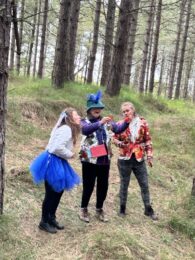
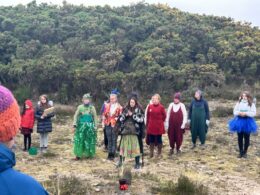
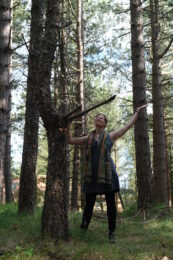
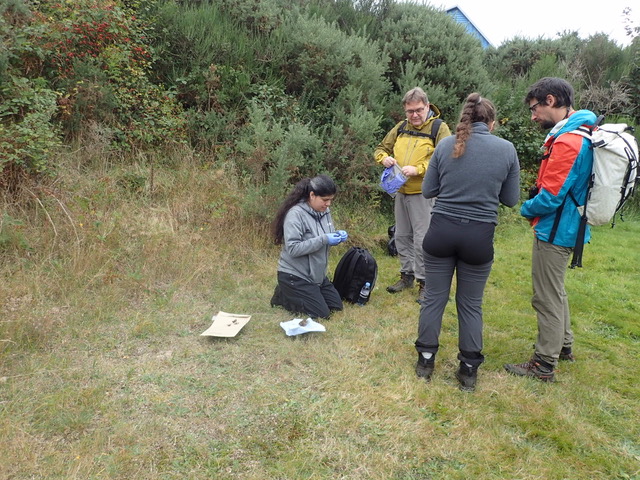
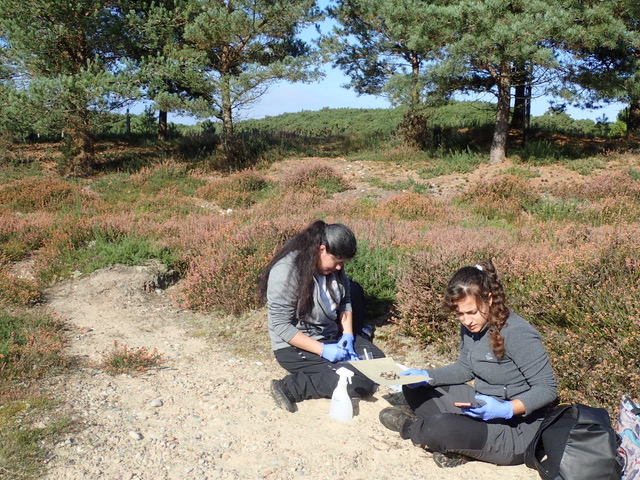
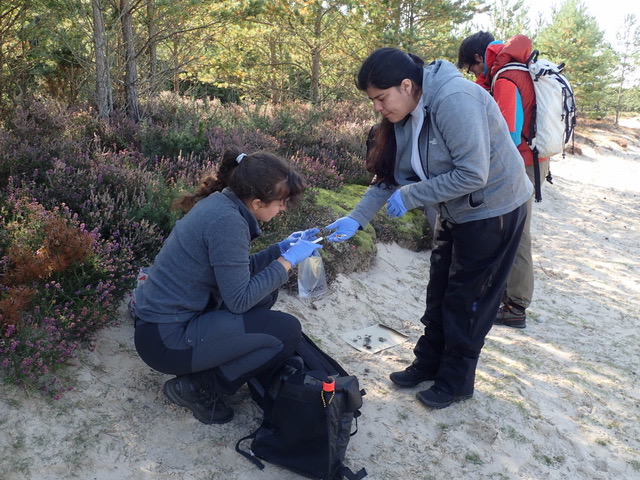
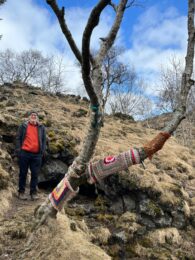
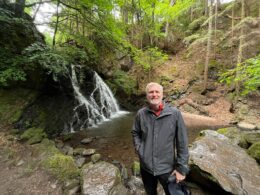
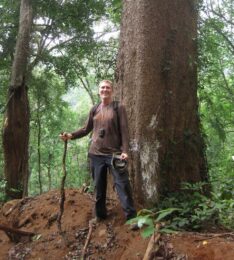















News from the Land
Much has happened on the land since I last wrote for our newsletter.
Most of the more dramatic changes have been written about by those more directly involved, for example the dunes restoration project.
This project, and the radical intervention with big machinery, gave me pause… It made me reflect on how we manage the land. We now have a stretch of bare sand dunes reaching all the way to our Wilkie’s Wood. It is a well thought through management intervention to reduce the disproportionate amount of gorse on the land, and to expand the disappearing habitat of some rare ‘star species’, but it is still an experiment. And we are now in the process of planning to extend that sandy stretch northward, toward the open dunes.
While I understand and have come to support the rationale behind these radical interventions, something in me is wondering…
It all makes sense, and yet…
I can’t help wondering – might we be ‘overmanaging’ the land?
I know questioning is healthy and I keep asking the land. I try to take the time to listen. But I don’t have the answers yet.
Meanwhile I show up every day for the hundred little unglamorous things that need to be done if we truly care for the land. Creating healthier ‘edges to our woodland’, by cutting up some fallen lodgepole pines and replacing them with more suitable trees – and yes, putting them into yet more plastic tubes.
Endless hours with the brushcutter keeping the regrowth of gorse down, in heathland, grassland, among young trees and on our firebreaks. We’ve not had a drop of rain for more than two weeks – so today I watered the young trees on the Green Burial Ground. And so on and on… My days are full.
It’s still a joy to be tasked with looking after this multifaceted land in our care.
By the time our children will be young adults, all the tree-tubes should have been removed, and the gorse will not be such a dominant feature out there anymore. They can pop out of their homes here and enjoy being surrounded by the magic and beauty of a bit of ‘wilder’ Nature.
May all we do to our environment be for the highest and best of all creatures who share this land.
Blessed be…
Kajedo, March ‘25